Pharmacological actions
In a simple way, these drugs produce quite opposite actions that produced by muscarinic agonists. For better understanding, we will show beneficial actions in green color and those actions unwanted in red color.

So let’s see the effect of these drugs on different organs.
Heart
Muscarinic antagonists inhibit the cholinergic response at the heart by blocking M2 receptors. Normally M2 receptors are inhibitory in nature producing cardiac inhibition. So, when these receptors are blocker the inhibitory response is inhibited leading opposite effects.
So they show
- +ve ionotropic effect
- +ve chronotropic effect
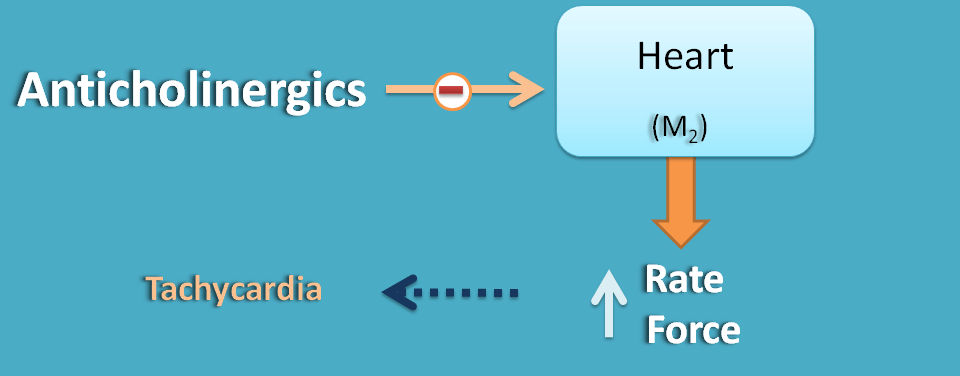
The decrease in the heart rate leads to tachycardia. Since they produce tachycardia, they can be indicated in sinus bradycardia. Atropine is particularly used for this condition.
Bronchioles
These drugs block M3 receptors on bronchioles and produce bronchodilatation. Bronchial secretions are also inhibited which is useful in asthma.
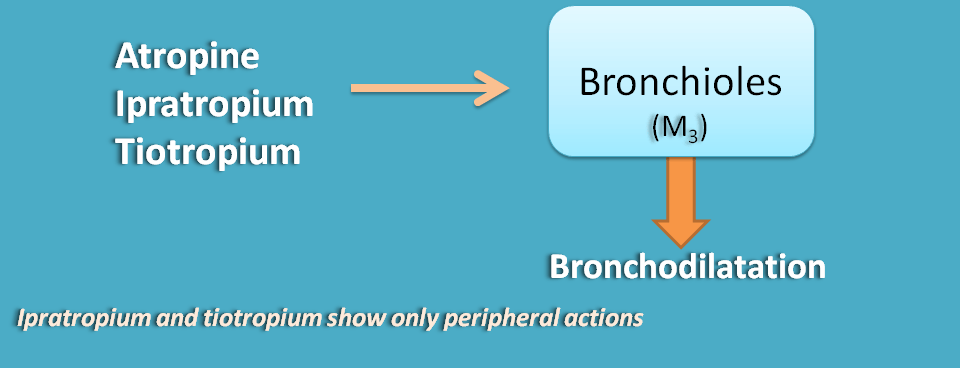
GI smooth muscle
These drugs decrease gastric motility leading to constipation.They also relieve spasm of GI smooth muscle hence used as antispasmodics. Drugs like atropine, hyoscine and dicyclomine are used for this purpose.
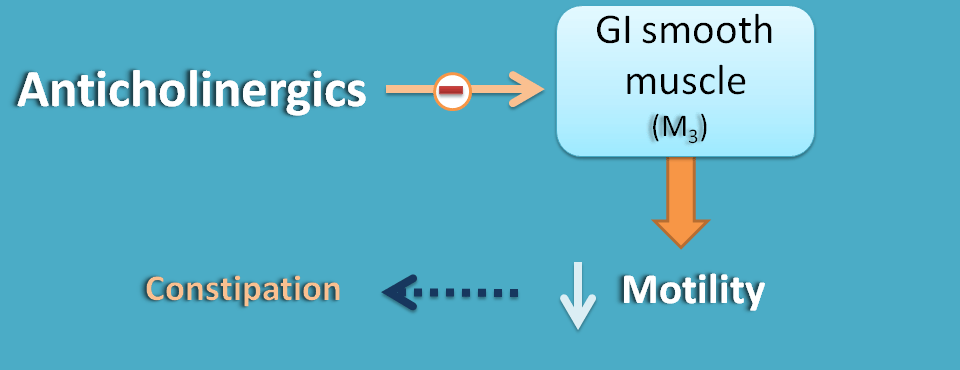
Bladder
Muscarinic antagonists act on M3 receptors at bladder producing relaxation and decreasing the tone. Darifenacin is a specific antagonist on M3 receptors whereas oxybutyin, tolterodine and solefenacin are non-selective anticholinergics, all acting as bladder relaxants.
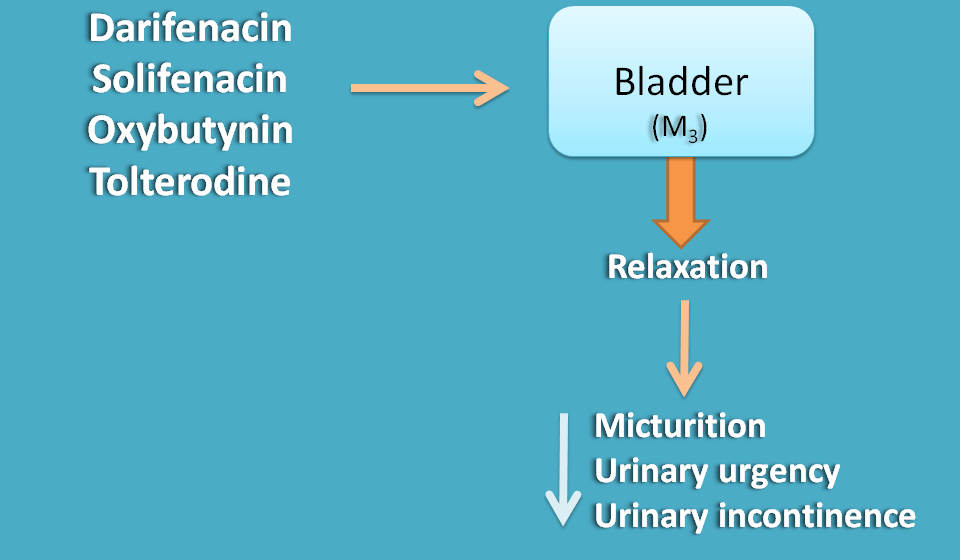
Hence these drugs can be used in the patients who are unable to control urination particularly in elder patients.
Eye
Just like muscarinic agonists, these drugs act on two muscles in the eye.
- Constrictor muscle
- Ciliary muscle
Constrictor muscle is required for pupilary constriction and relaxation of this muscle by muscarinic antagonists produce pupilary dilatation. That’s why these drugs can be used as mydriatics.
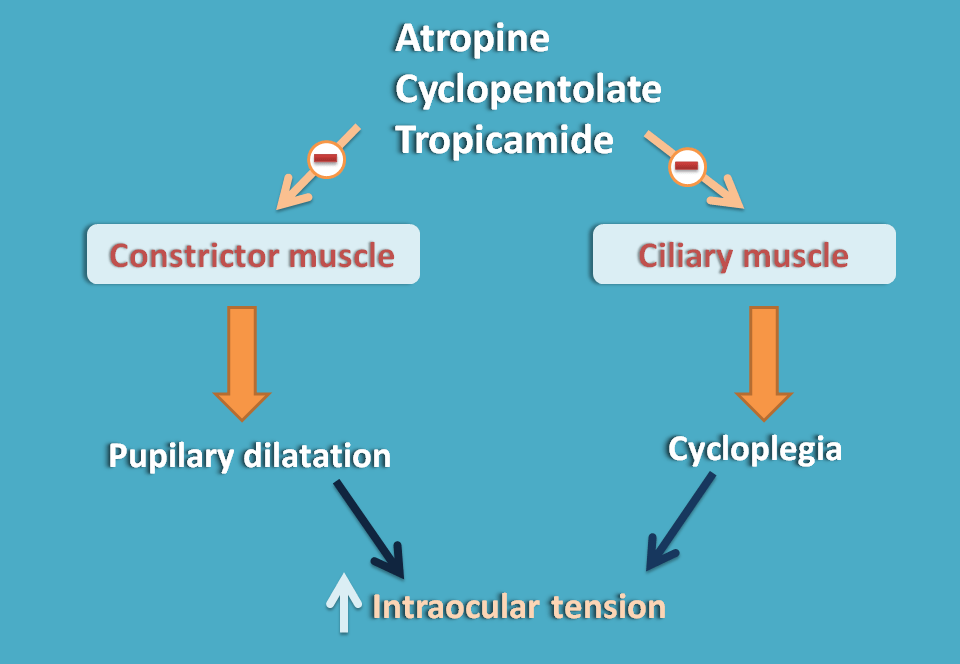
Similarly ciliary muscle is required for adjustment of the lens with respect to the distance of the object. Again relaxation of this muscle results in loss of accommodation fixing the eye to the particular vision. This paralysis of accommodation is termed as cycloplegia.
This effect is advantageous in few of the situations like examination of retina where refractoriness of eye should be inhibited fixing the vision at a particular opposition. This allows clear examination of the retina before cataract surgery.
As discussed previously, contraction of these two muscles improve clearance of aqueous humor. Muscarinic antagonists, on the other hand, produce relaxation of these two muscles leading to accumulation of aqueous humor increasing intraocular tension.
Glands
All the glandular secretions are inhibited.
- Salivary secretions
- Lacrimal secretions
- Sweat secretion
- Bronchial secretions
- Gastric secretions
Reduction of salivary secretion leads to dry mouth and reduction of lacrimal secretions leads to blurred vision.

Inhibition of sweat secretion is not significant at normal doses but at toxic doses such as atropine poisoning it produces severe hyperthermia.
Central effects
Unionized drugs like atropine and hyoscine can cross the blood brain barrier and block muscarinic receptors within the CNS. The central effects are mediated by M1, M4 and M5 receptors.

These drugs result in restlessness and confusion. They can also produce hallucinations, delirium and depression at toxic doses. M1 receptors mainly play role in short-term memory and drugs like scopolamine also disable this memory leading to amnesia.